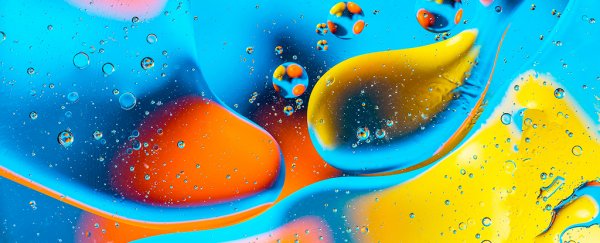Not that you could tell by looking at it, but the glass of water sitting on your desk contains two different kinds of water molecule rotating in subtly different ways.
A recent experiment managed to separate them, discovering one is much better at reacting than the other. We don't expect this 'better' water to become a market hit, but the method behind the discovery is a boon for quantum chemistry.
Chemists from the University of Basel in Switzerland took a mix of good old dihydrogen monoxide particles and used electrostatic fields to sort them according to their total nuclear spin.
Spin is a quantum property of particles describing an angled direction they're free to move in. Different types of particle are categorised according to the value of this property.
In one version of water referred to as an ortho-isomer, the combined spin of the particles making up its atomic nuclei add up to a value of 1.
But there is another type, called a para-isomer of water. Its nuclear spin totals 0, which according to some fundamental principles governing the movements of atoms in molecules means they should rotate differently to those in its cousin.
For the most part these spins don't change, meaning each molecule keeps its identity as a para- or ortho-isomer.
The question is: do their theoretical differences in rotation make any noticeable difference in how the two different water molecules react with other substances?
To find out, the researchers packed a super chilled crystal made of calcium ions with ions of diazenylium (N2H+).
They then shot streams of ortho- and para-water molecules into the heart of the crystal, where they reacted with the diazenylium.
Counting how many of the N2H+ ions were left in the crystal after a certain period gave the researchers a good idea of which isomer did a better job at reacting.
On tallying the results, they found the way para-water's atoms twisted and turned meant the isomer did a 23 percent better job at reacting than boring old ortho-water. Analysing the figures through a computer simulation confirmed the difference, showing not all water molecules behave in the same way.
No doubt there'll be some company out there ready to pounce on the discovery to make a mint selling it as a superior form of bottled water, adding just one more scam to the bottled water industry.
For most of us, water is water. Chugging down a glass of para-water likely won't make any difference to your health.
But to chemists, water is just plain weird, and learning more about its reactivity could make a significant difference to how we study its properties.
It might just be two hydrogens and an oxygen, but under various conditions it behaves in a multitude of unusual ways, forming strange states of matter that we're only just beginning to understand.
Since life is currently defined as complex, water-soluble chemistry, knowing how materials dissolve and react with water molecules is vital to our detailed understanding of biology and its origins.
Water-weirdness aside, the experiment's results also demonstrate our growing ability to model and test the effects different quantum properties have on entire molecules.
"The better one can control the states of the molecules involved in a chemical reaction, the better the underlying mechanisms and dynamics of a reaction can be investigated and understood," says the study's senior author, chemist Stefan Willitsch from the University of Basel.
Only recently a record was set for the world's most precise chemical reaction – the brief joining of a single atom of sodium with an atom of caesium.
Understanding the quantum properties of molecules in order to manipulate their reactivity on such a fine level is truly the new frontier of chemistry.
This research was published in Nature Communications.
